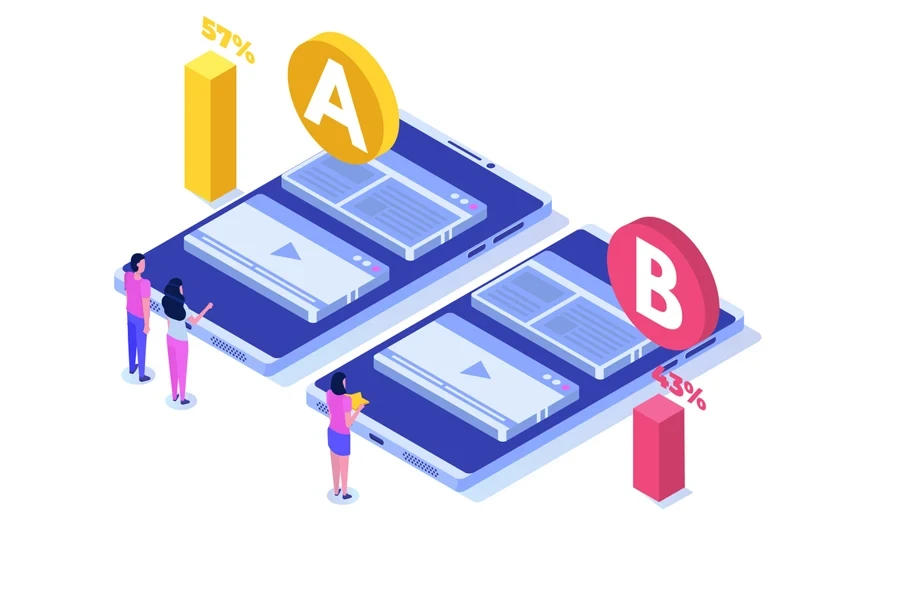Employing automation tools in your strategy is essential if you want to streamline your marketing efforts, boost your output, and supercharge your brand. There are a plethora of tools out there, ranging from email campaign tools to artificial intelligence and social media automation software, which, when employed correctly, can help make your digital marketing strategy a walk in the park.
A study by Statista shows that the global automation technology industry will bring in over USD 8 billion in revenue in 2024, a 12.6% increase over the previous year. And it’s not slowing anytime soon – over 70% of organizations have automated their marketing and have found success by using the right tools.
In this guide, we’ll teach you how you too can harness marketing automation tools to improve your business in 2024.
Table of Contents
What is marketing automation?
Benefits of marketing automation tools
7 tips for using automation tools to streamline your marketing
Conclusion
What is marketing automation?

Marketing automation involves using software to automate repetitive marketing tasks. Marketing departments often have to oversee labor-intensive tasks such as data collection, social media management, sending emails to potential customers, and other ad campaign-related assignments. With the help of marketing automation tools, such tasks can be done with ease and in less time.
Benefits of marketing automation tools
Using automation platforms to market your business has numerous perks. The following are some key benefits of marketing automation strategies:
- Time-saving: When you automate smaller tasks, you save significant time that can be put toward other things. For instance, when you can automate your email responses or customer service chat rooms online, your marketing team can focus their time and efforts on business-building activities.
- Improves efficiency: While humans need breaks and time away from work, automated tools can work 24/7 without interruption, which boosts productivity. A good example is Accenture, a financial services provider, which, according to the company’s website, expects to gain roughly USD 140 billion in productivity yields and cost savings by 2025 simply by leveraging automation technologies to help improve the efficiency of their labor forces.
- Streamline your marketing: Monitoring and measuring your promotional efforts is easier with the help of marketing automation software. Tools like Adroll, Metadata, Zalster, and Trapica can help you track your ad performance so that you can target customers and allocate your ad budget more efficiently.
7 tips for using automation tools to streamline your marketing
Now that you understand the benefits of automated marketing strategies, let’s take a look at ways you can implement them in your own business.
1. Consider your marketing automation needs

Before automating your marketing, you’ll first need to plan what you intend to gain from the process. If you want to automate your communications while continuing to handle your key marketing tactics like scheduling social media posts, then it makes sense to invest in a highly versatile marketing automation platform.
On the other hand, if you want to boost your lead generation efforts, retain subscribers in your email list, and tailor communications to your contacts, a powerful tool like Mailchimp will help you achieve those goals. In short, make sure that you are putting your needs first before committing to any tool.
2. Create ideal customer profiles to target your audience
A customer profile represents the characteristics and behaviors of a person who is likely to buy your products or services. To create an ideal customer profile (ICP), scan the customers currently targeted by your marketing campaigns to determine who has yet to be converted.
A customer relationship management tool can help you set up user profiles and automatically collect customer data and information directly from people visiting your website.
You can learn more about your customers from the data CRM tools gather, allowing you to better tailor your campaigns to a specific audience. ClickUp, SalesForce, and Zendesk are examples of highly-rated customer data platforms that you can use for ICP marketing and gathering data to help advertise your business more efficiently.
3. Add chatbots to help with customer service

Another way to utilize automated marketing tools is by employing chatbots to handle your customer support queries. With chatbots, customers can receive answers to their questions without the need for a human agent.
You can also analyze more technical questions, helping to inform and train your sales team in specific areas as well as improve your website to assist with similar questions if they occur again in the future. Using automated customer support software allows you to provide solutions to your customers while saving valuable time for other tasks.
4. Sending abandoned cart emails
About 70% of online shoppers visit a website, add products to their cart, and leave the site without completing the sale – what is known as an abandoned cart. However, this doesn’t mean that their business is lost forever.
Marketing automation systems help you return lost sales by sending abandoned cart emails to customers to reengage abandoning visitors automatically, helping to convince them to complete purchases. This is a great strategy to recover lost sales and increase your revenue.
5. Segmenting contacts into subgroups

Segmenting your email list enables you to focus marketing campaigns toward specific subgroups. Thanks to email automation software, you no longer need to separate your contacts yourself.
Pipedrive, Mailchimp, and Omnisend are some of the top email marketing tools that can aggregate subscribers into different groups based on geography, behavior, demographics, or psychographic factors.
This way, you can send marketing emails to different segments based on their needs. Whether it’s industry news, drip campaigns, or updates, recipients will only receive content that is relevant to them.
6. Personalizing content
In addition to separating your contacts, automation tools can also personalize content, which is an important part of a comprehensive digital marketing strategy. According to one study, 85% of companies were found to deliver personalized customer experiences. Another study revealed that 69% of businesses rank personalization as their top priority in marketing, emphasizing the importance of individualizing customer interactions.
A big challenge with personalization is that it can be taxing and time-consuming – that’s where automating comes in. Software can be used to set up workflows to deliver content that addresses pain points and other marketing materials to each customer in your marketing list.
7. Running A/B tests

You can also utilize marketing automation solutions to run A/B tests. A/B testing is a strategy that involves sending slightly different variations of emails, landing pages, web pages, call-to-actions, or marketing messages, etc., to two control groups of customers to see which performs best under certain conditions. Then, implement a combination of these elements to further boost performance. For example, you can run A/B tests on your ad campaigns to see which version brings better results.
Since A/B testing is a continuous process, you can employ automated A/B testing tools to run tests for you, allowing you to focus on other ways to improve your products and services. Crown & Paw, an online custom pet portrait store, for example, reported improving its conversion rates by 4.03%, a 2.5x increase, thanks to A/B testing.
Conclusion
Marketing automation strategies can help you make the most of your marketing processes. These techniques can be applied to various aspects of your promotional arsenal, whether it’s via email campaigns, content creation, or running A/B tests. Start by determining areas that you want to improve before investing in the right tools. By following the best practices laid out in this guide, hopefully your business will be propelled to new heights.
For more valuable business insights, make sure to subscribe to Alibaba.com Reads.





 Afrikaans
Afrikaans አማርኛ
አማርኛ العربية
العربية বাংলা
বাংলা Nederlands
Nederlands English
English Français
Français Deutsch
Deutsch हिन्दी
हिन्दी Bahasa Indonesia
Bahasa Indonesia Italiano
Italiano 日本語
日本語 한국어
한국어 Bahasa Melayu
Bahasa Melayu മലയാളം
മലയാളം پښتو
پښتو فارسی
فارسی Polski
Polski Português
Português Русский
Русский Español
Español Kiswahili
Kiswahili ไทย
ไทย Türkçe
Türkçe اردو
اردو Tiếng Việt
Tiếng Việt isiXhosa
isiXhosa Zulu
Zulu